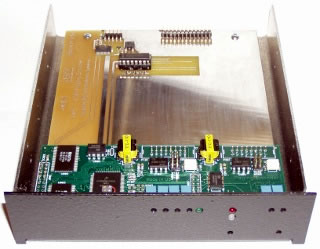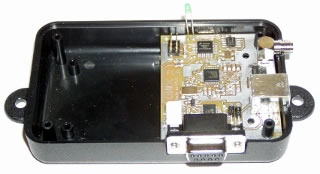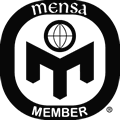
BloostonLaw Telecom Update Published by the Law Offices of Blooston, Mordkofsky, Dickens, Duffy & Prendergast, LLP [Portions reproduced here with the firm's permission.] www.bloostonlaw.com |
| Vol. 14, No. 20 | May 18, 2011 |

Tower Compliance Manual BloostonLaw has assembled a compliance manual for all tower/antenna structure owners, as well as any licensee mounting antennas on structures. The manual helps structure owners and licensees avoid FCC fines, minimize Federal and state approval delays, and minimize or avoid the potential for civil and/or criminal liability that could be associated with tower operations/accidents. The manual includes a detailed explanation of FCC, FAA and other Federal regulatory requirements so that your staff can understand the legal do’s and don’ts associated with tower construction and antenna mounting. We have also developed checklists that can be used by your employees and contractors to (1) make sure that necessary compliance steps are taken and (2) create a paper trail documenting such compliance. There are separate checklists for antenna structure owners and radio licensees that will use such structures. These checklists cover such issues as environmental protection, historic preservation, harmful RF radiation limits, interference protection, aviation safety, and Federal reporting requirements. A sample tower log is included. In recent years, tower owners have faced million dollar fines and even higher civil liabilities due to rule violations that may contribute to an aviation accident. Similar liability can arise from environmental or harmful radiation violations. Also, many licensees do not realize that, for every antenna mounted in the United States, the licensee must either obtain the prior approval of the applicable State Historic Preservation Officer (SHPO), or establish that the antenna qualifies for an exemption from this requirement. BloostonLaw is offering its antenna structure compliance manual in binder format, with the checklists provided on CD-ROM as well, so that you can print off the appropriate checklist for each new structure or antenna. Please contact the firm for a copy of the manual. BloostonLaw contacts: Hal Mordkofsky, 202-828-5520; and John Prendergast, 202-828-5540. |

INSIDE THIS ISSUE - Blooston Rural Carriers seek protections for rural telcos in comments on FCC’s Tribal Spectrum proposals.
- FCC proposes to extend outage reporting requirements to VoIP, broadband service providers.
- Verizon Wireless appeals FCC’s Data Roaming Order.
- FCC extends comment dates for Native Nations NOI.
|
Blooston Rural Carriers Seek Protections For Rural Telcos In Comments On FCC’s Tribal Spectrum Proposals BloostonLaw, on behalf of its rural local exchange carrier (LEC) and wireless clients, the Blooston Rural Carriers, is filing comments in response to the FCC’s Notice of Proposed Rulemaking (NPRM) seeking greater use of wireless spectrum over Tribal lands. The Blooston Rural Carriers support the idea of greater spectrum access but ask for limits to prevent a harmful impact on rural carriers, especially those already holding wireless licenses won at auction. The Blooston Rural Carriers recommend certain exemptions for rural telcos, CMA licensees and existing auction winners. They also recommend incentives for rural licensees to participate with tribes to extend service in a mutually acceptable way. The comments will be filed on May 19. Interested clients can join these comments by contacting us ASAP. In addition to providing wireline services in and around Tribal lands, many of the Blooston Rural Carriers hold spectrum licenses and offer wireless services to these areas and they have a better understanding than most about the challenges of building and maintaining net-works and providing service to remote and sparsely populated areas. In this regard, funding for initial buildout, as well as the need for a stable stream of revenues to support ongoing operations and network maintenance, stand as the greatest barriers to deployment of wireless infrastructure on Tribal lands and non-Tribal rural areas alike. They add that one-time support from the pro-posed Mobility Fund will be insufficient to make any meaningful impact on rural network deployment, much less deployment of service on Tribal lands where there is no private sector business case for such deployment. The Blooston Rural Carriers submit that the presence of a healthy and robust rural telephone industry will do far more to promote the rapid build-out and long-term sustainability of wireless services in unserved and under-served Tribal areas than a modest, one-time infusion of cash. The Commission should therefore focus its efforts on providing meaningful incentives for local carriers to enter into partitioning and/or long-term spectrum lease deals with Tribes, and for local businesses such as rural telephone companies to work with Tribal authorities to extend advanced wireless services to underserved areas. Given the wide diversity in Tribal area geography and Tribal service needs, a “one-size-fits-all” approach is unlikely to be successful, the Blooston Rural Carriers said. BloostonLaw contacts: John Prendergast and Cary Mitchell. FCC Proposes To Extend Outage Reporting To VOIP, Broadband Service Providers The FCC has proposed that interconnected Voice over Internet Protocol (VoIP) service and broadband Internet service providers report significant outages. Specifically, the FCC adopted a Notice of Proposed Rulemaking (NPRM) at last week’s open meeting that proposes rules under which providers of these services would report outages of at least 30 minutes that meet certain thresholds to ensure that critical communications infrastructure remains working in times of crisis. These network outage reports would enable the FCC to track and analyze information on outages affecting 9-1-1 service over broadband networks and determine if action is needed to prevent future outages from occurring. Broadband technologies delivering communications services are fast becoming substitutes for communications services provided by older, legacy communications technologies, the FCC said. According to the FCC's recent Local Competition Report, nearly 30 percent of the more than 89 million residential telephone subscriptions were provided by interconnected VoIP providers. Broadband networks now carry a substantial volume of 9-1-1 traffic and are also a significant form of communications in times of crisis. The NPRM proposes to expand outage reporting requirements relating to 9-1-1 to interconnected VoIP providers and broadband Internet service providers that are similar to reporting that has applied to wireless, wireline, cable and satellite communications service providers since 2005. The FCC said its current outage reporting requirements have been successful in reducing the number of communications outages across several categories and speeding the pace of recovery. For instance, within hours of Hurricane Katrina hitting land in 2005, the Commission's outage reporting data quickly became the Federal government's best source of information about the conditions of critical communications infrastructure in the disaster area. Working with communications providers, the FCC was able to identify specific needs for security, fuel, and other support and help guide and prioritize Federal restoration efforts. The NPRM seeks to extend these benefits to the broad-band communications networks frequently used during life threatening situations today. In the past year alone, several regions across the Nation have experienced significant disruptions to their broadband Internet and inter-connected VoIP services. This past November, a broad-band Internet service provider experienced a network outage that affected more than 40,000 customers across the state of Kansas for approximately 12 hours. Due to the increased reliance on VoIP and broadband technologies by the American public, an outage such as this significantly affects consumers' ability to reach 9-1-1 in an emergency. The NPRM seeks comment on the definition of outage reporting for these services, the proposed reporting thresholds, the effectiveness of mandatory reporting, how the reporting process should work, what information should be reported, and confidential treatment of the out-age reports. Comments in this PS Docket No. 11-82 proceeding will be due 60 days after publication in the Federal Register, and replies will be due 60 days thereafter. BloostonLaw contacts: Ben Dickens, Gerry Duffy, and Mary Sisak. VERIZON WIRELESS APPEALS FCC’s DATA ROAMING ORDER: Verizon Wireless has asked the U.S. Court of Appeals for the District of Columbia Circuit to void the FCC's automatic data roaming rules. The FCC’s Data Roaming Order requires facilities-based providers of commercial mobile data services to offer data roaming arrangements to other such providers on commercially reasonable terms and conditions (BloostonLaw Telecom Update, April 13). In its Notice of Appeal, Verizon states that it “seeks relief on the grounds that the Data Roaming Order is (1) in excess of the FCC’s statutory authority; (2) arbitrary, capricious, and an abuse of discretion within the meaning of the Administrative Procedure Act; (3) contrary to constitutional right; and (4) otherwise contrary to law. In response to Verizon's appeal, Rural Cellular Association (RCA) President & CEO Steven K. Berry said, "It is not at all surprising that Verizon Wireless is appealing the Data Roaming Order. Verizon has fought competitive policies for a long time. They have opposed data roaming, they have opposed interoperability, and they have opposed putting an end to exclusive handset deals." BloostonLaw contacts: Hal Mordkofsky, Ben Dickens, Gerry Duffy, and John Prendergast. FCC EXTENDS COMMENT DATES FOR NATIVE NATIONS NOI: The FCC has extended the comment dead-lines for its CG Docket No. 11-41 Native Nations Notice of Inquiry (NOI). Comments in this proceeding are now due June 20, and replies are now due August 4. The NOI seeks consultation and comment on several specific categories of communications issues affecting Native Nations and Americans living on Tribal lands—the lands of federally recognized American Indian Tribes, Alaska Native Villages, and Hawaiian Home Lands (BloostonLaw Telecom Update, April 6). BloostonLaw contacts: Ben Dickens, Gerry Duffy, and Mary Sisak. FCC STREAMLINES INTERNATIONAL TELEPHONE TRAFFIC REPORTING REQUIREMENTS: As part of its Data Innovation Initiative, the FCC has eliminated more than 25 “outdated and unnecessary” reporting requirements related to international telephone traffic and revenue, and sought comment on additional reforms to streamline and modernize remaining international data collections under Part 43 of the Commission’s rules. In particular, the Commission eliminated the quarterly inter-national traffic and revenue reporting requirements for large carriers and foreign-affiliated carriers, the annual circuit-addition report, and the telegraph toll division re-port. The Commission also eliminated the need to file separate international traffic and revenue reports for U.S. offshore points. The Commission concluded that the bur-dens to U.S. carriers serving international routes of pro-viding those reports now outweigh the benefits of this data. In addition, the Commission sought comment on additional reforms to streamline and modernize international reporting requirements, including establishing minimum revenue thresholds for carriers needing to file certain reports, and simplifying the type and amount of in-formation needed in the remaining reports. The Com-mission also sought comment on whether the growth of international VoIP services and non-common carrier circuit services prevents the Commission from getting an accurate picture of the international telecommunications market if it does not collect data on these services. Comments on the IB Docket No. 04-112 Further Notice of Proposed Rulemaking (FNPRM) will be due 30 days after publication in the Federal Register, with reply comments due 15 days thereafter. BloostonLaw contacts: Ben Dickens, Gerry Duffy, and Mary Sisak. FCC DIRECTS USAC TO DEVELOP PLAN FOR LIFE-LINE SUPPORT TO ETCs: The FCC’s Office of Managing Director (OMD) has instructed the Universal Service Administrative Company (USAC) to develop a proposal for disbursing Universal Service Fund (USF) Lifeline support to eligible telecommunications carriers (ETCs) based upon actual claims for reimbursement, instead of ETCs’ projected claims for support. Payment based on actual claims could replace the current administrative process, under which Lifeline support is paid each month based on a projection calculated by USAC that reflects the ETC's disbursements for the past 13 months plus a projected growth factor and a “true-up” once USAC receives an ETC's actual support claim on the FCC Lifeline and Link Up Worksheet (FCC Form 497). Specifically, in order to promote greater accuracy in Lifeline payment processing, OMD directed USAC to work with the FCC in developing an administrative process for disbursing Lifeline support to ETCs based on verified claims for reimbursement. For this purpose, the FCC wrote to USAC, “please provide a draft of USAC’s proposed process, including proposals for transition and outreach to affected program participants, to the Office of Managing Director within the next ninety (90) days for review. Please also include an estimate of the administrative costs associated with USAC’s proposed process and an estimate of any long term savings resulting from disbursement of Lifeline support based upon actual reimbursement claims. To facilitate a smooth transition to a payment process based on actual disbursements, the Wireline Competition Bureau (WCB) will seek public comment on USAC’s proposed process. After reviewing comments, OMD and WCB will determine what further steps are needed to adopt a new process.” BloostonLaw contacts: Ben Dickens, Gerry Duffy, and Mary Sisak. DEFENSE BILL INCLUDES “CYBER-WARFARE” PROVISIONS: The Chairman of the House Armed Ser-vices Committee, Rep. Howard P. "Buck" McKeon, (R-Calif.), has unveiled a draft of the 2012 Defense Authorization bill. The bill includes language that would allow the Department of Defense (DoD) to carry out clandestine operations in cyberspace against targets located outside the United States and to defend against all attacks on DoD assets. McKeon said that "because of the evolving nature of cyber warfare, there is a lack of historical precedent for what constitutes traditional military activities in cyberspace." He added that section 962 of his bill would clarify that the Secretary of Defense has the authority “to conduct clandestine cyberspace activities in support of military operations pursuant to the Authorization for the Use of Military Force . . . outside of the United States or to defend against a cyber attack on an asset of the Department of Defense." The section of the bill expressly "includes the authority to conduct clandestine military activities in cyberspace in support of military operations," where Congress has authorized the use of "all necessary and appropriate force" or to defend against a cyber attack on a DoD asset. Within the bill, there are more than a dozen items slated for funding labeled "cyber." The National Defense Authorization Act for Fiscal Year 2012 will be marked up today by the Armed Services Committee. BloostonLaw contacts: Ben Dickens, Gerry Duffy, and Mary Sisak. WISCONSIN LEGISLATURE PASSES BILL TO RESTRICT STATE COMMISSION REGULATION: Wisconsin’s Assembly has passed a bill to restrict the authority of state regulators to investigate consumer complaints or oversee phone rates, in an effort to deregulate the state’s telecommunications industry. The Assembly approved the Republican bill 80-13. The Senate passed it earlier Wednesday on a 25-8 vote. The proposal now goes to Republican Gov. Scott Walker, who will sign it into law, his spokesman said, according to Business-Week. Supporters of the bill say that it will eliminate out-dated red tape, create more competition and encourage providers to invest in wider access to broadband. That, they say, will enable businesses to operate faster and hire thousands of new workers, BusinessWeek said. Bill opponents, however, say that the bill would gut consumer protections and lead to higher phone bills with little in return. Providers will continue to neglect broadband in rural areas to serve urban centers with more people, BusinessWeek reported. Republicans drafted the plan at Walker's request and secured support from AT&T Wisconsin and the Wisconsin State Telecommunications Association. They say the plan mirrors similar changes in a number of other states, including Ohio, Indiana, Illinois and Michigan, according to BusinessWeek. The propos-al would prohibit the state Public Service Commission from investigating consumer complaints about providers and strip it of its authority to set rates. The commission would be prohibited from auditing providers and regulating data services such as high-speed Internet service. Providers wouldn't have to give the commission any information about their prices and service terms. They also wouldn't have to provide service throughout a territory after 2013, according to BusinessWeek. BloostonLaw contacts: Ben Dickens, Gerry Duffy, and Mary Sisak. TEXAS GETS CONDITIONAL OK FOR 700 MHz SYSTEM; ROCKEFELLER PLANS D BLOCK LEGISLATION: The FCC has granted, with conditions, the waiver petition filed by the State of Texas seeking early deployment of a statewide public safety wireless broadband network in the 700 MHz public safety broadband spectrum (763-768 MHz and 793-798 MHz). The FCC found that the petitioner has generally met the standard for waiver of the Commission’s rules and that so long as the conditions imposed are met, grant of this waiver is appropriate in advance of resolution of the broader issues pending in this docket. The FCC said it acted on the petitioner’s waiver request now in light of its supplemental request for expedition to preserve the specific funding availability identified for its constituent jurisdiction, Harris County, which has secured $10 million in federal funding that must be expended or encumbered by June 30, 2011. By enabling early deployment in this band by the petitioner, the FCC said, it takes another step towards development of a nationwide, wireless, broadband interoperable public safety network. In a related matter, Senate Commerce Committee Chairman Jay Rockefeller (D-W.Va.) expressed optimism that his so-called 700 MHz D-Block reallocation and incentive auction legislation (S 28) that he is drafting with Ranking Member Kay Bailey Hutchison (R-Texas) will pass Congress by September. The bill would authorize $11 billion for the construction of “growth-enhancing” infrastructure projects, including the next generation aviation navigation system, development of high-speed rail transportation, and smart grid electrical power transmission and management technology. It is not clear whether this proposed legislation has wide-spread support from either Congress or the industry. BloostonLaw contacts: Hal Mordkofsky, John Prendergast, and Cary Mitchell. FCC SETS COMMENT DATES FOR NOI TO IMPROVE RIGHTS OF WAY & WIRELESS SITING POLICIES: The FCC has set comment dates for its Notice of Inquiry (NOI) that seeks to work with stakeholders including state and local governments, other Federal agencies, Tribal governments, consumer advocates, and the private sector to identify means of improving rights of way policies and wireless facilities siting requirements. Comments in this WC Docket No. 11-59 proceeding are due July 18, and replies are due August 30. Policies for managing rights of way and siting wireless facilities, including the procedures and costs for acquiring permission to build, affect how long it takes and how much it costs to deploy broadband. By working together with other interested parties on these issues, the Commission said it can reduce the costs and time required for broad-band deployment, both fixed and mobile, which will help unleash private investment in infrastructure, increase efficient use of scarce public resources (including spectrum) and increase broadband adoption. The NOI is in-tended to update the FCC’s understanding of current rights of way and wireless facilities siting policies, assess the extent and impact of challenges related to these matters, and develop a record on potential solutions to these challenges. This inquiry is a necessary step towards determining whether there is a need for coordinated nation-al action to improve rights of way and wireless facilities siting policies, and, if so, what role the Commission should play in conjunction with other stakeholders. The FCC seeks a detailed record of the nature and scope of broadband deployment issues, including both best practices that have promoted deployment and matters that have resulted in delays. BloostonLaw contacts: Hal Mordkofsky, John Prendergast, and Richard Rubino. NTCA ISSUES “CALL FOR ACTION” REGARDING USF/ICC REFORM: The National Telecommunications Cooperative Association (NTCA) has issued a “Call for Action” to help guide consideration of universal service and intercarrier compensation reform by the FCC. According to NTCA, the FCC continues to examine reform proposals that could have a devastating impact on your businesses, customers and communities. Because the agency aims to complete action on its reform initiative in the next several months, it is critical that rural telcos take immediate steps to engage their members of Congress (MOCs) and other policy-makers in this discussion in an effort to achieve a more positive outcome for all Americans, NTCA said. It added that In the forthcoming weeks/months, Senate and House members will return to their states/districts for a series of breaks. It is imperative that you begin planning visits with your MOCs during these periods. These work periods are the perfect opportunity to invite your MOCs to tour your telco, attend your annual meeting or come to your local fair or parade, or for you to meet with them at their local office. Scheduled congressional recess work periods over the coming months are: House—May 14–22
Senate—May 30–June 5
House—June 4–12
House—June 25–July 5
Senate—July 4–10
In addition, NTCA is urging its members to give serious consideration to attending an urgent NTCA Fly-In in Washington on July 13, 2011. This Fly-In will be a significant effort to meet with MOCs and the FCC to express and explain specific concerns about the potential paths of reform. BloostonLaw contacts: Ben Dickens, Gerry Duffy, and Mary Sisak. COPPER WIRE IS A TARGET FOR THIEVES: Just when you thought that wireless was going to take over the telecommunications world! CBS reports that police in Quincy, Mass., are trying to apprehend “copper wire thieves.” Apparently, someone cut the copper telephone wires from two utility poles in the city; working lines that service Verizon customers. According to CBS, police say thieves cut through plastic sheathing to get at the copper wires. They allegedly cut off a four-foot section, exposing 300 pairs of wires. Quincy police Sgt. Patrick Faherty says the vandals hope to make some quick cash, but it’s risky for a quick return, according to CBS. It appears to be a crime of opportunity in that sense, and from a public safety perspective, local authorities are concerned that people treat any electrical wire as if it’s live,” he said. Copper remains a hot commodity for thieves, and stealing items made from copper has become a crime communities across the state are dealing with in tough economic times. CBS said that Verizon reports that it will cost at least $2,000 to repair each of the two poles that were vandalized, although it is unlikely the thieves will get that kind of money at a scrap yard. Apparently, the cities of Braintree and Dorchester also had utility poles vandalized affecting at least 200 customers in all three communities. 
BloostonLaw Private Users Update Published by the Law Offices of Blooston, Mordkofsky, Dickens, Duffy & Prendergast, LLP [Portions reproduced here with the firm's permission.] www.bloostonlaw.com |
 NYC Unveils Public Safety System For Mobile Alerts The FCC, New York City Mayor Michael Bloomberg, and other officials have announced PLAN—the Personal Localized Alerting Network. PLAN is a free service that will allow customers with an enabled mobile device to receive geographically-targeted, text-like messages alerting them of imminent threats to safety in their area. This service will be available in New York City by the end of 2011, at least two calendar quarters before the rest of the nation. The FCC stated that PLAN ensures that emergency alerts will not get stalled by user congestion, which can happen with standard mobile voice and texting services. Authorized government officials can send mes-sages, which participating wireless providers then push using their cell towers to enabled mobile devices in a targeted geographic area. When PLAN is operational, customers in an area affected by an emergency who have a PLAN-capable mo-bile device will receive an alert of ninety characters or less. Consumers will receive three types of alerts from PLAN: (1) alerts issued by the President;
(2) alerts involving imminent threats to safety of life; and
(3) Amber Alerts. Participating carriers may allow subscribers to block all but Presidential alerts.
In 2006, Congress passed the Warning, Alert and Response Network (WARN) Act, requiring carriers that choose to participate to activate PLAN technology by a deadline determined by the FCC, which is April 2012. Participants that will offer PLAN at least two calendar quarters ahead of schedule in New York City are AT&T, Sprint, T-Mobile, and Verizon. Ninety percent of New York subscribers who have a PLAN-capable mobile device in these cities will be able to receive PLAN alerts by the end of 2011. BloostonLaw contacts: Hal Mordkofsky, John Prendergast, Richard Rubino, Cary Mitchell, and Bob Jackson. FCC Seeks Comment On Signal Booster NPRM The FCC has requested comment on its proposal to facilitate the development and deployment of signal boost-ers, which hold great potential to empower consumers in rural and underserved areas to improve their wireless coverage in their homes, at their jobs, and when they travel by car, recreational vehicle, or boat; however, these signal boosters (which would likely be unlicensed, off the shelf equipment sold to the public at large) could also be a source of potential interference to existing wire-less service providers and users, if adequate safeguards are not put into place. (BloostonLaw Telecom Update, April 13). Comments in this WT Docket No. 10-4 proceeding are due June 24, and replies are due July 25. The Notice of Proposed Rulemaking (NPRM) proposes a new regulatory framework authorizing individuals and entities to operate “consumer signal boosters'' provided the devices comply with: (1) All applicable technical and radiofrequency (RF) exposure rules, and (2) a set of parameters aimed at preventing and controlling interference and rapidly resolving interference problems should they occur. A consumer signal booster is any signal booster operated by (or for the benefit of) consumers on spectrum being used to provide subscriber-based services, e.g., voice communications, texting, using a broadband connection to access e-mail or the Internet. The Com-mission also proposes revisions to the rules governing signal boosters used for private land mobile services. In addition, the Commission addresses three petitions for rulemaking filed by Bird Technologies, Inc. (filed Aug. 18, 2005), the DAS Forum (a membership section of PCIA—the Wireless Infrastructure Association) (filed Oct. 23, 2009) (DAS Forum), and Wilson Electronics, Inc. (filed Nov. 3, 2009), and a petition for declaratory ruling filed by Jack Daniel DBA Jack Daniel Company (filed Sept. 25, 2008), all of which relate to signal boosters. BloostonLaw contacts: Hal Mordkofsky, John Prendergast, and Richard Rubino. SF Temporarily Tables SAR Labeling Ordinance San Francisco officials have indefinitely delayed implementation of the city's Right to Know ordinance, which would have required retailers to display a phone's specific absorption rate (SAR) at the point of sale and distribute materials educating consumers on cell phone radiation. A revised version of the legislation is likely to be introduced, but no further details have been announced, ac-cording to press reports. Last June CTIA-The Wireless Association filed a lawsuit regarding the ordinance and canceled future wireless shows in San Francisco (BloostonLaw Telecom Update, June 30, 2010). CTIA argued that the SAR provision was misleading to consumers and infringed on the First Amendment rights of retailers. As a result of the lawsuit, the San Francisco Board of Supervisors delayed the ordinance's implementation date several times—most recently to June 15—and held two closed door meetings with City Attorney Dennis Herrera's office to discuss the issue. It's clear, however, that the city isn't backing down completely. Supervisor John Avalos, who voted for the measure last year, could introduce amended legislation as early as next week. Though Frances Hsieh, one of Avalos' legislative aides, wouldn't discuss specifics, it's expected that any amendment will remove the SAR provisions. BloostonLaw contacts: Hal Mordkofsky, John Prendergast, Richard Rubino, and Cary Mitchell. Comment Sought On Plan To Use TETRA Technology The FCC has asked for comment on its Notice of Pro-posed Rulemaking (NPRM) proposing to modify its rules to permit the implementation of Terrestrial Trunked Radio (TETRA) technology in the United States. The FCC seeks comment on its proposed technical rules that would enable digital technologies like TETRA to operate without causing interference to existing systems, and on how the deployment of TETRA technology may affect public safety interoperability. Comments on these proposed rule changes will aid the Commission in determining whether or not it is in the public interest to make TETRA technology available to private wireless users, especially those that must comply with the upcoming narrowbanding requirements. Comments in this WT Docket No. 11-69 and ET Docket No. 09-234 proceeding are due June 27, and replies are due August 9. BloostonLaw contacts: Hal Mordkofsky, John Prendergast, and Richard Rubino. FCC Proposes To Collect $335.8 Million in Reg Fees The FCC has adopted a Notice of Proposed Rulemaking (NPRM), proposing to collect $335,794,000 in regulatory fees for Fiscal Year (FY) 2011. The annual regulatory fee amount to be collected is established each year in the Commission’s Annual Appropriations Act which is adopted by Congress and signed by the President and which funds the Commission. In this annual regulatory fee proceeding, the FCC said it will retain many of the established methods, policies, and procedures for collecting regulatory fees adopted by the Commission in prior years. The FCC intends to collect these regulatory fees during a September 2011 filing window in order to collect the required amount by the end of our fiscal year. The FCC said it will use the same regulatory fee assessment methodology adopted in FY 2010 and in prior years. In the NPRM, the FCC said that during this transition to digital TV, licensees of Low Power, Class A, and TV Translator/Booster facilities may be operating in analog mode, in digital mode, or in an analog and digital simulcast mode. For regulatory fee purposes, a fee will be assessed for each facility operating either in an analog or digital mode. In instances in which a licensee is operating in both an analog and digital mode as a simulcast, a single regulatory fee will be assessed for this analog facility that has a digital companion channel. As greater numbers of facilities convert to digital mode, the Com-mission will provide revised instructions on how regulatory fees will be assessed. In many categories, the fees are going up. However, for commercial mobile radio service (CMRS), the FCC proposes in FY 2011 to maintain the regulatory fee rate at $0.08 per subscriber due to the declining subscriber base in this industry. As it did in FY 2010, the FCC proposes to limit the in-crease of the FY 2011 2011 interstate telecommunications service provider (ITSP) fee rate to $.00361 per revenue dollar, and assess a slightly higher fee across all other regulatory fee categories. The Commission also noted that a regulatee’s mere allegation of financial hardship does not automatically entitle it to a deferral of its obligation to pay regulatory fees; only a properly supported claim of financial hardship will en-title the regulatee to a deferral. Accordingly, the FCC indicates that if a request for deferral is not supported by documentation of financial hardship, it will be denied, and an associated petition for waiver or reduction will be dis-missed. A regulatee cannot delay payment on the theory that its deferral request triggered an automatic six-month extension of its obligation to pay. The FCC thus propos-es to amend section 1.1166 (b) of its Rules to read, “Deferrals of fees, if granted, will be for a designated period of time not to exceed six months.” In FY 2011, the Commission said it will promote greater use of technology (and less use of paper) to improve the regulatory fee notification and collection process. In addition to seeking comment on the specific initiatives dis-cussed in the paragraphs below, we ask whether there are other steps we could take to promote greater use of technology in collecting regulatory fees. Comments in this MD Docket No. 11-76 proceeding are due May 24, and replies are due June 1. BloostonLaw contacts: Hal Mordkofsky, John Prendergast, Gerry Duffy, and Richard Rubino. BloostonLaw Proposes “Safe Harbors” For Certain Qualified Towers On behalf of its participating clients, BloostonLaw has filed comments in response to the FCC’s public notice proposing interim rules for the processing of applications for Antenna Structure Registration (ASR). As noted in BloostonLaw’s recent petition for reconsideration (BloostonLaw Telecom Update, April 27), the FCC has pro-posed draft rules and procedures that could significantly affect a client’s ability to construct an antenna tower in a timely manner. The draft rules and procedures are the result of a decision by the U.S. Court of Appeals for the District of Columbia Circuit in American Bird Conservancy v. FCC that requires the FCC to consider the impact of antenna towers on migratory birds. The FCC’s pro-posed stricter tower rules could affect private radio users that build their own towers, and could drive up rent and other costs associated with leasing towers. As part of this process, the FCC has proposed that the proponent of any antenna structure requiring antenna structure registration (ASR) be required to publish a notice in a local newspaper of general circulation (or other-wise follow your local zoning notification processes) regarding the proposed construction or alteration of the antenna structure. Additionally, following the local notice, the proposal would have to be posted on the FCC's web-site for a period of 30 days in order to allow unknown third parties the opportunity to request that the FCC re-quire you to file an Environmental Assessment prior to the submission of an ASR application. The potential impact of these rules is significant delay and expense if a request for Environmental Assessment is filed — regardless of how frivolous the request might be. In its comments, BloostonLaw urged the Commission to narrow the scope of antenna structures that would be subject to environmental review, by advocating safe harbors for antenna structures meeting certain height requirements and utilizing high intensity and/or medium intensity white obstruction lighting (since it is red tower lights that have been identified as the main tower-related issue for migratory birds). This would clear the vast majority of applications for ASRs from being subject to environmental processing due to avian mortality concerns. Additionally, for those proposals that would be subject to environmental review, BloostonLaw has proposed a “shot-clock” mechanism that would deem the issuance of a Finding of No Significant Impact (FONSI) if the FCC did not act within a defined period of time. Earlier this month, BloostonLaw filed a petition for reconsideration of the procedures that the FCC is following in creating the new tower rules. In particular, Blooston-Law’s clients are concerned by the FCC’s decision to call its rule changes merely “procedural”, and to refrain from a full fledged rule making proceeding. In its petition, BloostonLaw asserts that the position taken by the Commission is erroneous and violates the Administrative Procedure Act (APA) because the draft rules and procedures, when taken in their totality, would give unidentified members of the public new substantive rights which do not exist under current regulations, to the detriment of all applicants proposing the construction of any antenna structure requiring registration with the Commission. Accordingly, the EA Public Notice should be rescinded and an appropriate Notice of Proposed Rulemaking issued. Moreover, the petition continues, the draft rules and procedures are not simply a change in the procedures for filing antenna structure registration (ASR) applications. To the contrary, they provide for newly created substantive rights to unidentified third parties that do not presently exist — namely the right to be notified of and the opportunity to seek environmental review of each and every proposed antenna tower construction and modification requiring FCC registration. No standards for seeking review are specified. From all that appears, any member of the public would be able to throw a monkey wrench into the ASR approval process by requesting an EA review, regardless of how baseless the request may be. Even if the request is ultimately denied, the applicant may have suffered substantial injury by being subjected to what could be considerable delay in the approval process — a delay that does not now exist under the present procedure. As a result, proposed rule changes are not merely “procedural”, but instead are substantive in nature and require notice and comment rulemaking. BloostonLaw contacts: Hal Mordkofsky and Richard Rubino. Comment Dates Set For FNPRM On Disclosures In Ex Parte Discussions The FCC has set comment dates for its Further Notice of Proposed Rulemaking (FNPRM) on amending its rules to require that notices of ex parte discussions disclose real parties-in-interest. The proposed changes are aimed at greater transparency in the public record when industry members lobby the FCC on pending rule makings and other matters. The change was proposed because the existing rules do not enable interested parties to know whose interests are being represented when a contact is made. By requiring the disclosure of this information the proposed amendment would increase transparency and openness in Commission proceedings, the FCC said. The FNPRM was adopted in conjunction with a Report and Order amending the ex parte rules. Comments in this CG Docket No. 10-43 proceeding are due June 16, and replies are due July 18. Comment is sought on the suitability of using existing judicial disclosure rules, such as Supreme Court Rules 29.6 and 37.6, or Rule 26.1 of the Rules for the U.S. Court of Appeals for the District of Columbia Circuit. Comment is also sought on the possible use of the Lobbying Disclosure Act as a model. BloostonLaw contacts: Hal Mordkofsky, Ben Dickens, Gerry Duffy, and John Prendergast. FCC Issues Citation For Unauthorized Marketing The FCC has issued an official Citation issued to GadgetTown d/b/a GadgetTown.com for marketing in the United States unauthorized radio frequency devices — cell phone signal blockers and GPS signal jammers — in violation of section 302(b) of the Communications Act, and section 2.803 of the Commission’s rules. The FCC said GadgetTown should take immediate steps to come into compliance and to avoid any recurrence of this misconduct. These jamming devices pose significant risks to public safety and other radio communications services. Future violations of the Rules in this regard may subject your company to substantial monetary penalties, seizure of equipment, and criminal sanctions. The FCC’s investigation focused on the marketing of the following unauthorized radio frequency devices in the United States: the Cigarette Case Cell Phone Signal Blocker, the Portable Cell Phone Signal Blocker, the 60M Range Mountable Cell Phone Signal Blocker and the Portable Anti-Tracker GPS Signal Jammer Blocker. GadgetTown admitted that it imported and marketed the signal jamming devices in the United States. Accordingly, the FCC found that GadgetTown violated section 302(b) of the Communications Act and section 2.803 of the Rules and issued a Citation. If, after receipt of this Citation, GadgetTown violates the Communications Act or the Rules by engaging in similar conduct, the Commission may impose monetary forfeitures of up to $16,000 for each such violation or each day of a continuing violation, and up to $112,500 for any single act or failure to act. In addition, violations of the Communications Act or the Rules can result in seizure of equipment through in rem forfeiture actions, as well as criminal sanctions, including imprisonment. BloostonLaw contacts: Hal Mordkofsky, John Prendergast, and Richard Rubino. Amoco Seeks Waiver To Use 900 MHz Band Channels On June 9, 2010, Amoco Chemical Company submitted a request for waiver to permit it to utilize 896-901/935-940 MHz (900 MHz) band itinerant use channels in the private land mobile radio system for its plant in Texas City, Texas. Four 900 MHz band frequency pairs have been designated for operations at unspecified locations for varying periods of time (itinerant use). Amoco seeks to add three of those frequency pairs to its license for 900 MHz Industrial/Land Transportation Station WPAH364. Amoco is engaged in the processing and creation of chemical products from petroleum products. It states that the purpose of the proposed channel expansion is to eliminate channel congestion and provide more reliable communications on the existing system for the chemical plant, adjoining refinery, and waterways that serve as Amoco’s terminal port. Amoco’s frequency coordinator states that no other 900 MHz band frequencies are avail-able in the vicinity. We seek comment on the waiver request. Comments on the request are due no later than May 25, 2011. Reply comments are due no later than May 31, 2011. All filings should reference the docket number of this proceeding, WT Docket No. 11-77. BloostonLaw contacts: Hal Mordkofsky, John Prendergast, and Richard Rubino. Filing Window For 800 MHz Locations Vacated By Sprint To Open June 1, 2011 The FCC’s Public Safety and Homeland Security Bureau (PSHSB) has issued a Public Notice announcing that it will open a filing window for additional locations vacated by Sprint Nextel Corporation in the 809.5-815/854.5-860 MHz (Channels 251- 470) portion of the 800 MHz band. The channels being released by Sprint were previously made available at some locations within each NPSPAC Region. The additional locations being vacated by Sprint will make those same channels available for licensing over a larger geographic area in each NPSPAC Region. The PSHSB will begin accepting applications on June 1, 2011 for facilities at the locations made available by its Public Notice. From June 1, 2011 to June 1, 2014, the channels will be made available exclusively for licensing to public safety eligible entities. From June 1, 2014 to June 1, 2016, the channels made available by the records released by this Public Notice will be available exclusively for licensing to public safety eligible entities and critical infrastructure industry eligible entities. Applicants who receive licenses for channels vacated by Sprint must provide 60 days notice to Sprint before they activate a channel for testing or the commencement of operations. Sprint may continue existing operations on channels covered by this Public Notice after new licenses are granted until 60 days after the new licensee notifies Sprint of its intention to activate the channel(s) for testing or commencement of operations. This advance notice must be provided to Sprint by email at 800mhzinterleavedspectrum@sprint.com. Upon receipt of such notice, Sprint must cease operation on the channel(s) specified in the notice within 60 days to the extent necessary to comply with the co-channel spacing requirements of Section 90.621(b) of the rules. New licenses granted will be conditioned on providing such 60-day notice to Sprint. BloostonLaw contacts: Hal Mordkofsky, John Prendergast, and Richard Rubino. N.Y. Fire District Granted Public Safety Waiver The FCC has granted an associated waiver request filed by Garden City Park Fire District, New York, for authority to use “the frequency pair 476.0625/473.1250 MHz … to contact Department members … and to facilitate communications between Department members and the Department’s dispatcher.” Since the frequencies are within spectrum allocated for Part 22 point-to-point and trunked mobile operations, Garden City Park sought a waiver pursuant to Section 337(c) of the Communications Act, of Sections 20.9(a)(6), 22.621, 22.623, and 22.651 of the Commission’s rules, to use these frequencies for public safety purposes. In the alternative, the Fire District sought a waiver pursuant to Section 1.925 of the Commission’s rules. Garden City Park sought authority to use frequencies 476.0625 and 473.1250 MHz as the basis of a public safety communications system that will enable it to improve communications among firefighters, officers, chiefs, and dispatchers, thus enhancing firefighter safety and community service. Since the proposed frequencies are within spectrum governed by Part 22, and therefore allocated for commercial mobile use, the Fire District sought waiver relief to utilize the frequencies for public safety communications purposes. Specifically, the Fire District seeks waiver of the following rules: Section 20.9(a)(6), which provides that the proposed frequencies shall be assigned for commercial mobile radio services; Section 22.621, which provides that frequency 476.0625 MHz is designated point-to-multipoint operation; Section 22.623(b), which requires that the channels may be as-signed in an unpaired configuration only to control base stations in the public mobile service; and Section 22.651, which designates frequencies immediately adjacent to 473.1250 MHz for trunked mobile service. The FCC found that Garden City Park has not demonstrated that no other spectrum allocated to public safety services is immediately available as required by the statute. A previous finding of insufficient public safety channel availability in an area, while relevant, does not ad-dress changes in the spectrum landscape over time that must be considered. Since the cited cases were decided, broadcasters have vacated the 700 MHz band as a result of the June 12, 2009, conclusion of the DTV transition. In addition, the Bureau approved the Region 8 (New York Metropolitan Area) 700 MHz Regional Plan. Accordingly the 700 MHz public safety channels are immediately available and ready for assignment. However, the FCC said its finding that Garden City Park does not warrant waiver relief pursuant to Section 337 of the Act does not foreclose consideration of Garden City Park’s alternative request for waiver relief pursuant to Section 1.925 of the Commission’s rules. Section 1.925 provides the Commission the necessary flexibility to achieve its statutory objective of safeguarding life and property by considering an applicant’s request for waiver relief according to the standards that an applicant must meet under the rule. The FCC found that Garden City Park has presented sufficient information for us to consider whether waiver relief is justified under Section 1.925. BloostonLaw contacts: Hal Mordkofsky, John Prendergast, and Richard Rubino. This newsletter is not intended to provide legal advice. Those interested in more information should contact the firm. |








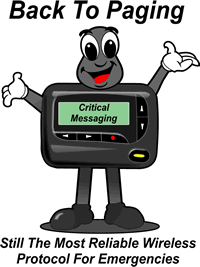



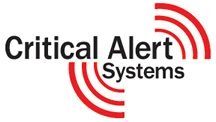
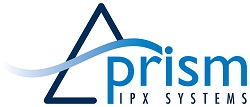





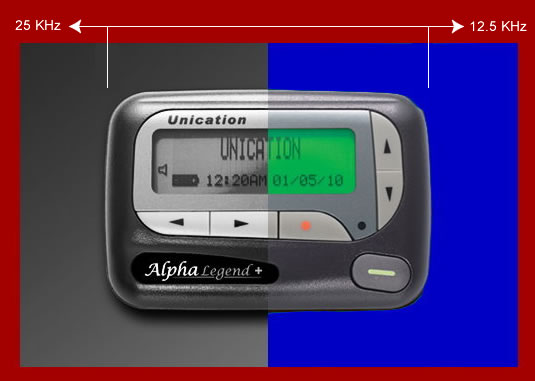
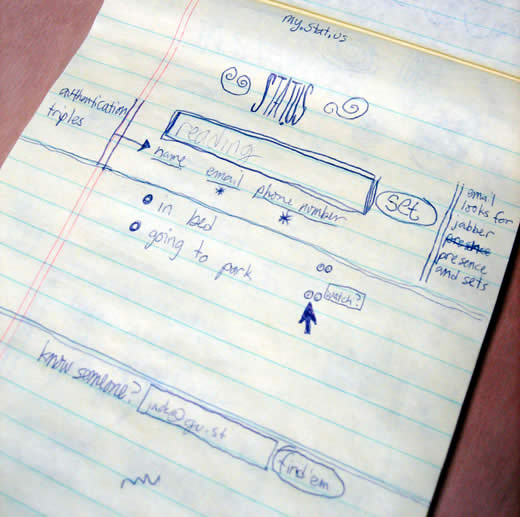





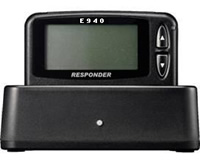


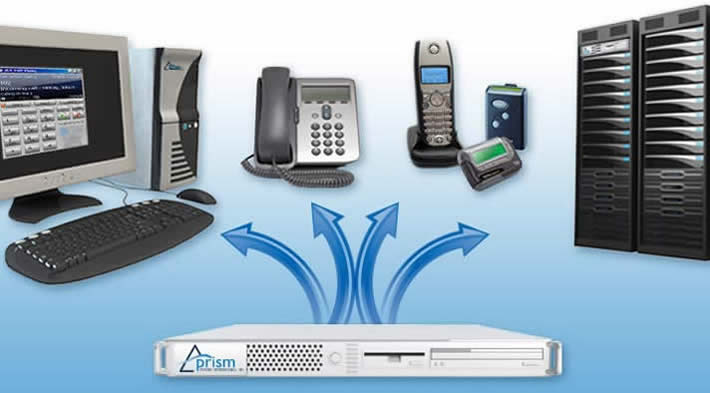


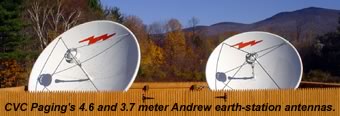













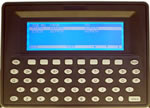


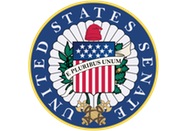 Barely a week after sending its
Barely a week after sending its 
